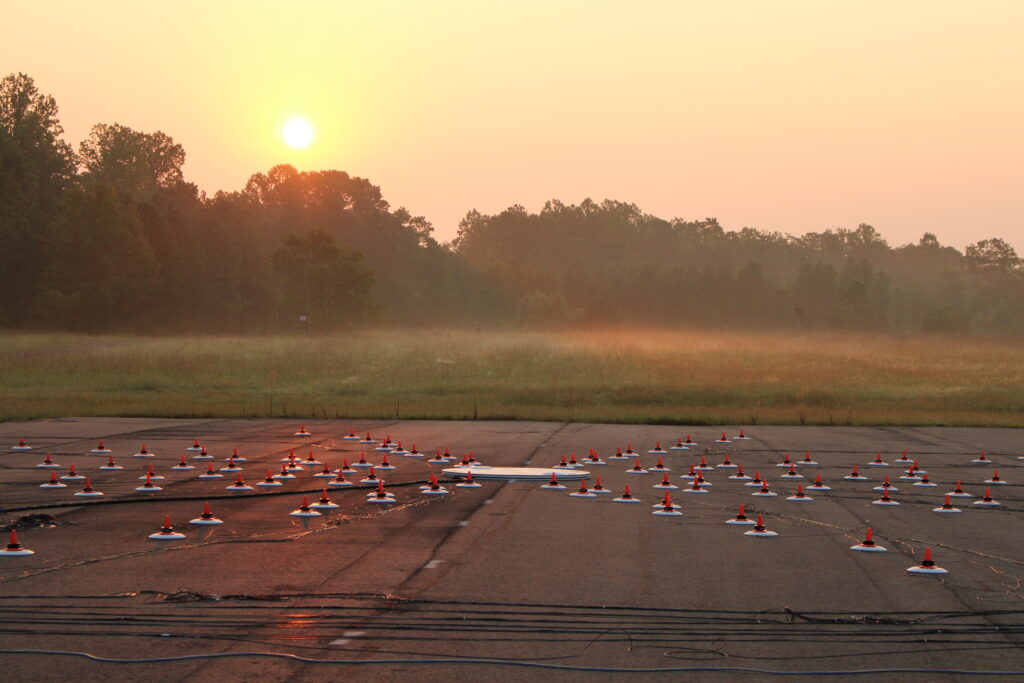Wireless microphone arrays supported by NASA can quickly, cheaply, and accurately map the noises of aircraft, animals, and more.
Those who live near an airport or experience a cicada swarm can quickly pinpoint the source of the noise, but identifying the noise made by a new drone or running tests to spot pests in crop fields requires high-tech sound-mapping solutions.
In collaboration with NASA, Interdisciplinary Consulting Corporation (IC2) has introduced a new wireless array that makes that possible, anywhere, anytime. Planes must be noise tested and certified to not exceed Federal Aviation Administration noise limits. Small, dish-shaped bases, called nodes, are equipped with embedded microphones that measure changes in air pressure caused by sounds above. For larger vehicles like airplanes, hundreds of sensors (microphone arrays) are placed in a pattern on the runway to monitor the underside of planes as they fly overhead.
Interested in making flight testing cheaper, NASA's Langley Research Center in Hampton, Virginia, supported the company with a Small Business Innovation Research contract and expert consulting.
“Each node has a small computer system that can acquire and store data in memory on an SD card, as well as a small web server that allows the end user to start acquisition, stop recording, download files, check battery status, etc.,” said Chip Patterson, vice president of IC2.
To operate individual nodes or large arrays, all that is needed is a commercially available wireless access point and a standard laptop with IC2's software application. The technology integrates into existing noise test systems.
The microphones can be easily replaced with a variety of other sensor types, such as acoustic sensors, allowing monitoring of animal calls that indicate their health, and infrasonic sensors can measure the noise of supersonic aircraft and pinpoint the direction and arrival of sonic booms.
Beyond aircraft testing, this small, portable technology is being adopted for a variety of projects and applications. Working with entomologists, IC2 uses acoustic data to listen for high-frequency insect sounds in agricultural environments. By discovering where insects are feeding on crops, farmers can intervene before the insects cause too much damage, limiting the use of pesticides in those areas. With NASA's support, IC2's wireless array technology enables acoustic-based solutions in agriculture, aerospace and other fields.



